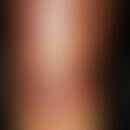HistoryThis section has been translated automatically.
General informationsThis section has been translated automatically.
You might also be interested in
Occurrence/EpidemiologyThis section has been translated automatically.
EtiologyThis section has been translated automatically.
Until now it was assumed that the immune system of the organimus reacts primarily to sugars in the cell wall of the mould with an immunological defence reaction (detectable with antibodies against Galactomann - see Galactomann Antigen Test).
In the meantime, further immunologically relevant components are known, such as a fungal melanin, which the organism recognises via its own receptor called "MelLec" (melanin-sensing C-type lectin receptor) (Stappers MHT et al. 2018). This C-type lectin receptor recognizes the naphthalene-diol unit of 1,8-dihydroxynaphthalene (DHN)-melanin.
Melanin plays a major role in the pathogenicity of Aspergillus fumigatus. The oxygen radicals formed by the immune system of the organism act as oxidizing agents. Melanin acts here as a redox buffer and can neutralize oxygen radicals. This effect can be intensified by binding double positively charged iron ions [Fe(II)] to melanin.
ClinicThis section has been translated automatically.
- Mostly infestation of the paranasal sinuses or ear canal or the respiratory tract. A. fumigatus frequently leads to aspergillosis or disseminated aspergillosis in patients with HIV infection, immunosuppressive therapy, diabetics, organ transplants, bone marrow transplants or in the presence of other serious underlying diseases.
- As inhalation allergen in allergic persons e.g. responsible for triggering symptoms of allergic rhinoconjunctivitis.
MicroscopyThis section has been translated automatically.
- Thick-walled, septated, hyaline hyphae; distinct air mycelium.
- Conidiophores: Numerous, coarse, thick-walled, unsegmented; colourless to grey-green; length: 300-500 μm, width: 2-10 μm.
- Pear-shaped vesiculae (size: 20-40 μm Ø).
- Phialides: radially arranged, single row; length: 4-8 μm, width: 2-4 μm.
- Conidia: Columnar or clustered arrangement; round, colourless to grey-green; size: 2-4 μm Ø.
Complication(s)This section has been translated automatically.
Regardless of the direct effect of the focus of infection by Aspergillus fumigatus, the mycotoxins formed by Aspergillus species such as aflatoxins, sterigmatocystin, ochratoxin are likely to play a role in the pathogenesis of an Aspergillus infection of the organism.
LiteratureThis section has been translated automatically.
- Helmi M (2003) Aspergillus infection in lung transplant recipients with cystic fibrosis: risk factors and outcomes comparison to other types of transplant recipients. Chest 123: 800-808
- Petraitis V et al (2003) Combination Therapy in Treatment of Experimental Pulmonary Aspergillosis: Synergistic Interaction between an Antifungal Triazole and an Echinocandin. J Infect Dis 187: 1834-1843
- Stappers MHT et al (2018) Recognition of DHN-melanin by a C-type lectin receptor is required for immunity to Aspergillus. Nature 555:382-386.
- Tarrand JJ et al (2003) Diagnosis of invasive septate mold infections. A correlation of microbiological culture and histologic or cytologic examination. At J Clin Pathol 119: 854-858
- Warris A (2001) Invasive pulmonary aspergillosis associated with infliximab therapy. N Engl J Med 344: 1099-1100
- Warris A et al (2002) Multidrug resistance in Aspergillus fumigatus. N Engl J Med 347: 2173-2174
Incoming links (5)
Allergic bronchopulmonary aspergillosis; Amphotericin b; Anidulafungin; Mould diseases; Pulmonary Aspergillosis ;Outgoing links (8)
Allergen; Allergic rhinoconjunctivitis; Aspergillosis; Galactomannan antigen test; Hiv infection; Moulds; Mycotoxins; Pulmonary Aspergillosis ;Disclaimer
Please ask your physician for a reliable diagnosis. This website is only meant as a reference.









